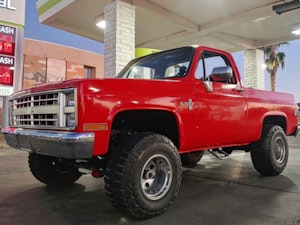Media | Articles
Ford’s big electrification investment
Last fall, Ford announced the creation of an electric vehicle group called Team Edison, backed by an $11.1-billion investment. The goal is 16 battery-electric production models in the lineup by 2022, plus two dozen plug-in hybrids, all for global markets.
Linking this activity to Thomas Edison, America’s greatest inventor, is appropriate not only because he and Henry Ford were pals but because the two played significant, although little-known, roles in electric car history.
Ford completed his Quadricycle car prototype in 1896 while employed at Edison’s Detroit Illuminating Company. Even though Edison encouraged Ford’s pursuit of combustion-powered transportation, he had something entirely different in mind: cars powered by electric motors and the nickel-iron batteries he was producing.


In 1903, the very year the Ford Motor Company was founded, Edison proclaimed, “Electricity is the thing. There are no whirring and grinding gears with their numerous levers to confuse. There is not the almost terrifying uncertain throb and whirr of the powerful combustion engine. There is no water circulating system to get out of order—no dangerous and evil-smelling gasoline and no noise.” To back his assertions, Edison converted four large touring cars to electric propulsion. One of the three experimental electric cars Edison constructed in 1912 has recently been restored in England.
Marketplace
Buy and sell classics with confidence
Ford had his hands full building manufacturing plants and creating the Model T, but once his car for the masses was in production, he told a New York Times reporter in 1914, “Within a year, I hope, we shall begin the manufacture of an electric automobile. I don’t like to talk about things that are a year ahead, but I am willing to tell you something of my plans.
“The fact is that Mr. Edison and I have been working for some years on an electric automobile which would be cheap and practicable. Cars have been built for experimental purposes, and we are satisfied now that the way is clear to success. The problem so far has been to build a storage battery of light weight which would operate long distances without recharging. Mr. Edison has been experimenting with such a battery for some time.”

Henry’s son Edsel headed up this program, with cars expected to cost between $500 and $750 and offer 50–100 miles of range between charges; deliveries were to commence in 1916. Henry’s wife, Clara, was already on board, preferring to drive an electric car requiring no engine cranking or gear shifting. The 1914 Model 47 Detroit Electric brougham she drove until 1930 is proudly displayed at The Henry Ford in Dearborn, Michigan.
Then as now, battery technology was the critical issue. To avoid the need for one in his Model T, Ford developed a dependable magneto ignition system that generated its own electricity. Unfortunately, Edison’s nickel-iron batteries weren’t up to the electric propulsion task and Ford refused use of heavier but more powerful lead-acid batteries. After a significant $1.5-million investment in electric car development, the project was quietly shelved. However, lessons learned fostered Ford’s introduction of electric lighting and electric start in 1919.
Today, Ford’s Team Edison includes 200 or so engineers and planners assembled at a renovated building called The Factory in Detroit’s historical Corktown. Borrowing a touch of Mustang history, their first production model will likely be a battery-electric crossover called Mach 1.
That team should draw inspiration from some of the most notorious words ever spoken by Henry Ford: “History is more or less bunk. It is tradition. We don’t want tradition. We want to live in the present, and the only history that is worth a tinker’s dam is the history we make today.”














